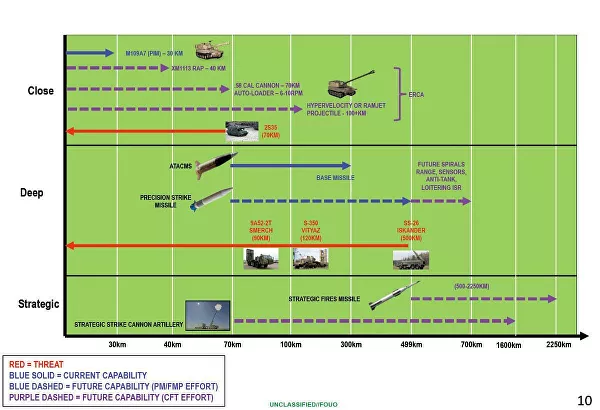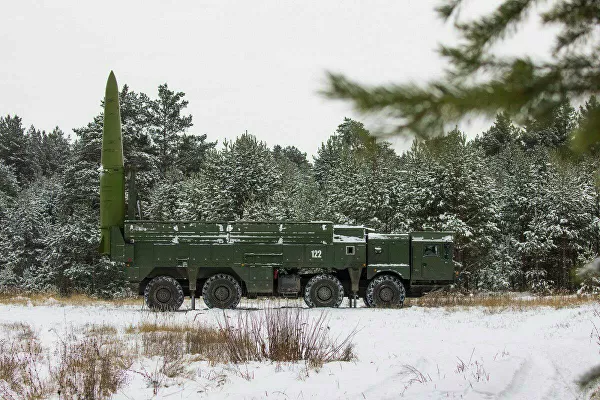The United Kingdom may be the first foreign partner to join the Precision Strike Missile program. On January 21, 2022, the Royal Army confirmed its intentions and signed a memorandum of understanding. The British Ministry of Defense said the document demonstrates the commitment of the two countries to ensure interoperability.
So far, neither the British Ministry of Defense nor the Pentagon has announced the timing of the signing of the main document, but they confirm that preparations for the conclusion of the agreement are already underway. The British say that the British army urgently needs a ground-based precision-guided missile that allows it to strike the enemy both in local conflicts and in large-scale military operations.
Precision Strike Missile (PrSM) program
The Precision Strike Missile (PrSM) program, launched in 2017, involves the creation of a new generation of high-precision operational-tactical missiles with an official initially declared range of 60 to 499 km as the development was carried out taking into account the U.S. withdrawal from the INF Treaty. According to available information, even now, the rocket can fly 550 km, and according to other sources – up to 700-750 km. At the same time, the Americans declared plans to reach a range of over 1,000 km. The estimated speed is over Mach 5.

Russian S-400 Destroyer
In the United States, the PrSM complex is positioned as “an effective means of destroying modern and upcoming anti-aircraft missile systems”. It is called “the destroyer of Russian S-400 air defense systems.”
In December 2020, Lockheed Martin released a video of testing the upcoming operational-tactical missile under the Precision Strike Missile (PrSM) program using computer animation. In the video, the corporation shows how the latest PrSM tactical missiles launched from the M142 launcher of the HIMARS missile system destroy the Russian S-400 anti-aircraft system located in urban areas on the territory of some Middle Eastern or African country, judging by palms.
The missiles are guided to the Russian complex by U.S. fifth-generation F-35 fighters. Judging by the video, the Russian air defense system was destroyed “point-blank” as it does not see either fighters or launched missiles. It means the S-400 unit was destroyed without hindrance.
Chinese Warship too
In December 2019, American General John Rafferty said the missile developed by Lockheed Martin was primarily designed to overcome Russian air defenses in the European theatre of operations. In the Asia-Pacific region, the missile will be used to destroy Chinese warships.

The comment came after Lockheed Martin conducted the first test of the Precision Strike Missile (PrSM) at the American White Sands missile range in New Mexico. The prototype was launched from the M142 launcher of the HIMARS missile system and flew about 240 km to the target area. The corporation had said that “the test was successful with the achievement of all specified goals.”
Production and deployment
The new missile should replace the Lockheed Martin MGM-140 ATACMS tactical missiles in the future. In addition, the U.S. is also considering the possibility of using the new ammunition on the M270A1 MLRS and M142 HIMARS multiple launch rocket systems. Serial production is scheduled for 2023.
Currently, the missile is equipped with a homing head with inertial and GPS navigation systems and can hit stationary targets with high accuracy. PrSM will receive a new homing head as part of the modernization program in 2025. The multi-mode homing head is being developed as part of the LBASM project (Land-Based Anti-Ship Missile).
In mid-2020, the LBASM homing system passed its first flight tests. Then the system was installed on a jet aircraft.
U.S. response to the Russian Iskanders missiles
PrSM can be called an analogue of the Russian Iskander missile system (9M729 or SSC-8), the system which was cited as the main reason for the United States to withdraw from the INF Treaty.
Office of the Director of National Intelligence said in 2018, “Russia initially flight tested the 9M729 – a ground based missile – to distances well over 500 kilometres (km) from a fixed launcher. Russia then tested the same missile at ranges below 500 km from a mobile launcher. By putting the two types of tests together, Russia was able to develop a missile that flies to the intermediate ranges prohibited by the INF Treaty and launches from a ground-mobile platform.”

Moscow denied the accusations, and the Ministry of Defense even revealed some of the missile’s characteristics. The head of the Rocket Forces and Artillery, Mikhail Matveevsky, said that the modernization of the cruise missile aims to increase the power of the warhead and its accuracy. Missiles 9M728 and 9M729 are unified for most of the main units. He said the maximum flight range of the 9M729 missile has even been reduced to 480 kilometres due to the increase in mass.
Russia even took an unprecedented step and invited the United States to get acquainted with the 9M729 missile to make sure that it complies with the requirements of the INF Treaty. The Americans refused.
